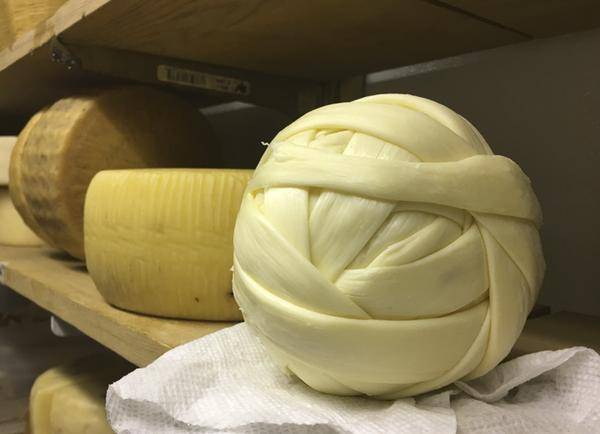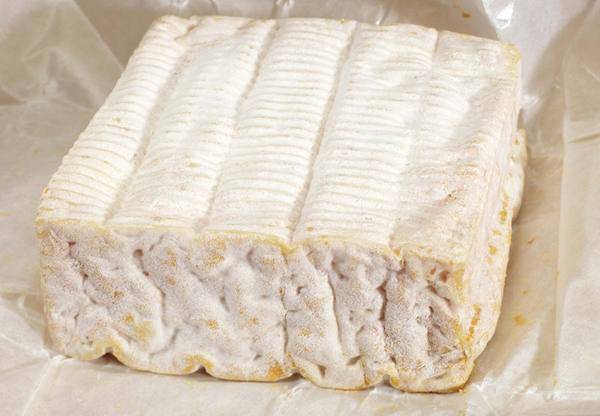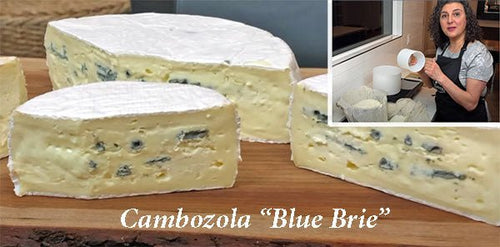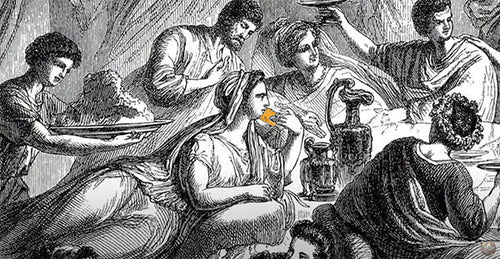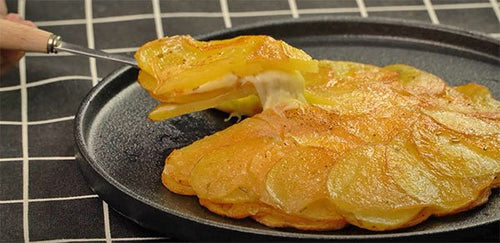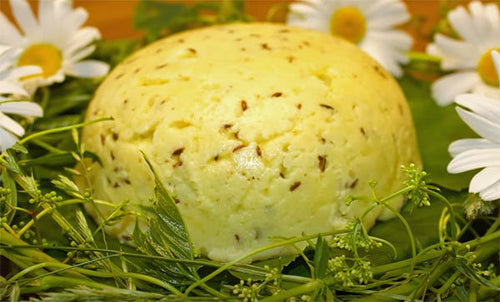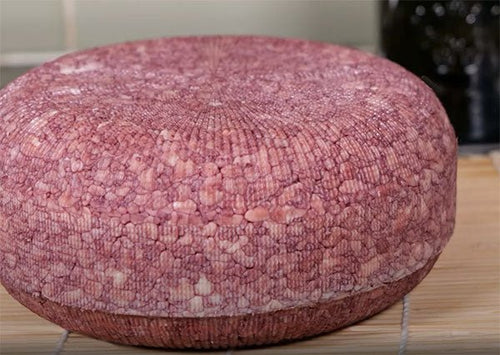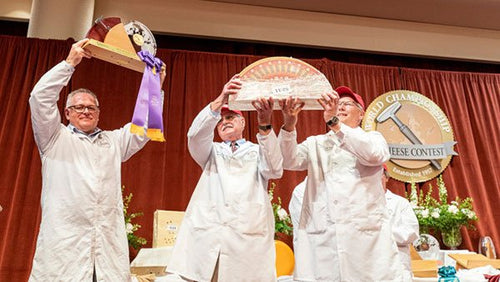Cheese Making Recipe of the Month
Reblochon
Reblochon is one of my all-time favorite cheeses. It also happens to be the fourth best-selling cheese in France. Unfortunately, you will not find raw milk Reblochon in America, due to a recent change in FDA policy. So, the only way to really experience this gem is to make it yourself. With this month's fabulous recipe, we'll all be able to enjoy this fantastic cheese once more.
Cheese Making Questions & Answers
Can My Cheese be Pressed Longer
Q. Cheese cave - I am a nervous (soon to be first time) cheese maker at home. If I am successful at some of the beginner cheeses, I will want to try some that require a bit of aging. Could I possibly use a wine fridge as a small cheese cave?
A. Use Hygrometer - Yes, many of our customers have used a wine fridge for aging their cheese. One of the most important things is to make sure you can monitor the temperature and, especially, moisture accurately. A good hygrometer such as the one sold on our website will give you this information.
How to Care for Aging Blue Cheese
Q. Powdered milk - I have a lot of powered milk which I need to use up. I have successfully made yogurt with it, but would like to make other cheeses. Can I use powered milk to make cheese, even cottage cheese or cream cheese?
A. Non-Fat - Yes, you can, as long as it's non-fat powdered milk. Whole milk powder tends to go rancid on the storage shelf. You can add some cream to the milk when you make it up. Do realize, however, that due to the processing, it will never be quite the quality of fresh milk.
The Underside of Cheese is Damp While Aging
Q. Late lactation - I have been making goat cheese for over 5 years, using your chevre culture and have never had a problem. But, the last 5 batches I have made will not make a solid curd.
I bought a batch of culture back in March and was making cheese once or twice a week until about 3 weeks ago. No problem. But then it started not making a solid curd. I tried letting it sit longer, but little improvement. I tried warming the milk to a lower temp (I am in Texas, so, HOT); no improvement.
Got on your website (cheesemaking.com) to see what I could find. It sounded like since my Alpine was late in her milking cycle, maybe I needed to add calcium chloride. Tried that last night following directions on the bottle (1/4 tsp in 1/4 c water) when beginning to heat the milk. Same results again this morning.
I did make yogurt last night from the same batch of milk. No problem. Turned out just like it should. Any ideas? Add rennet? The chevre packets I am using all arrived at the same time in a batch of 36. I have kept them in the freezer the entire time. And the first 15 or so worked just fine. HELP!
A. Alkalinity factor - "Late lactation" is probably what is giving you the trouble. The other cultures all seem to have worked and you have kept them well, so, you can cross out cultures as one of the factors.
During late lactation, and especially in hot weather (more stress for the goat), the milk becomes more alkaline. Due to this, it requires more biological activity to acidify the milk to the point where it is ready to coagulate. Remember: this is a lactic cheese and totally dependent on acid development for coagulation.
You could try increasing the amount of culture you use by about 50% to see if that helps ... but at some point the milk become so alkaline that the culture cannot achieve the proper acidity.
Yogurt worked because it relies on a totally different process as well as utilizes very different proteins. It is not unexpected that this worked.
What should I have done differently to have a more consolidated texture throughout?
Q. Uniform texture - Recently, I made a Farmhouse Cheddar according to the directions in Home Cheese Making. When I cut it open after one month of aging, I found the texture closest to the outside of the cylinder to be relatively smooth and unified while the cheese closet to the center was crumbly. Why the difference and what should I have done differently to have a more consolidated texture throughout?
A. Even pressure - This is common when the initial pressing weight is too high, especially when the curd goes into the press with too much moisture. The surface curds become compressed and thus block the interior from releasing it's free moisture.
Always begin the press with lighter pressing and then gradually increase. That locked in moisture can then begin fermenting again and cause it to become more acid, which is the crumbly/granular character you see.
Have a cheese making question, we're here for you: info@cheesemaking.com
Meet a Fellow Cheese Maker
Nanette Truelove's Apple Cranberry Cheesecake
Nanette grew up on a farm and her grandmother made basket cheese from their own dairy cows. Nanette left the farm a long time ago, but, recently, she discovered that she could add calcium chloride to store-bought milk to make her own cheese.
Fortunately, the results are just like the cheese she grew up with.
Carole Bennett's Cajeta Casera
Carole loves to make cajeta during the holiday season because she gives small jars of it as gifts.
She found the recipe originally online and adapted it for her own use through trial & error. (It was easy for her to experiment because she has plenty of milk from her many goats.)
News From Fellow Cheese Makers
A Healthy Science Project
Me and my friend are doing the science fair this year. We are partners. Anyway, I used your book/ebook to help me. You may be wondering what my project is about.
Well, we both like baking so we decided to do something about a Cheesecake. But we learned that goat cheese/Chèvre is better for you than cream cheese. We are going to replace cream cheese with goat cheese in the Cheescake and do a survey at our school to see which one people like most.
We had to do a Works Cited page. I am proud to say that your ebook/ book and website are in my Works Cited page.
Hannah Anderson, Arizona
Curd Cutter Design
I saw the email you folks sent out showing how to make a horizontal curd cutter. I made one of those several years ago, but it just didn't do the job the way I wanted it to. So, after thinking it out for awhile, I designed a bi-directional curd cutter. This will cut both the horizontal and vertical directions in one operation.
Here's how it works: after adding rennet and stirring it in thoroughly, the curd cutter is placed into the milk pot.
Once a clean break is achieved, the cutter is rotated 180 degrees, then pulled vertically out of the pot. This allows the cutting process to take about 15 seconds, and yields a uniform curd size.
The only drawback is that the cutter must be made to fit the pot being used. I've thought of patenting this design, but so far I haven't found anyone who is interested in producing and marketing it. (Contact richkathyl@gmail.com)
Rich Lindecker, Alpena, Arizona
From Russia With Love
By good chance, I found out about this site and now I'm your good friend and zealot.
It's so interesting to read about recipes and the history of every recipe. I found cheese making not long ago and this resource is a great help with this deal.
Nowadays, I have tried only 3 recipes from your great amount and I'm so amazed. They are so tasty. I didn't hope to repeat the resemblance, but these are my first cheddar, caciotta and alpine tomme. Great thanks to you.
Igor Fomin, Tula, Russia (near Yasnaya Polyana where great writer I. Tolstoy lived and is buried)































